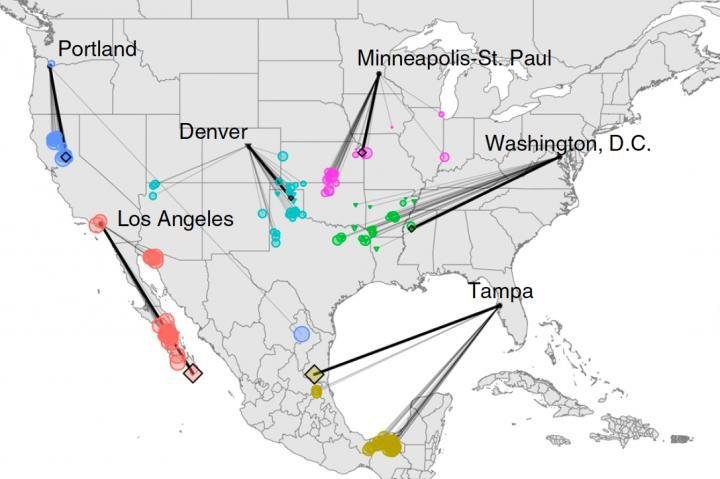Climate change will cause the climates of many cities to migrate 500 miles southward. Photo by Matthew Fitzpatrick/University of Maryland Center for Environmental Science
Feb. 12 (UPI) -- Don't like the climate? Wait a few decades. In less than a generation, the climate of hundreds of North American cities will migrate several hundred miles.
According to a new study detailing the impacts of global warming on U.S. cities, the nation's capital will feel like the Deep South in just 60 years. Residents all across the continent will feel like they moved several states away, all without packing a box.
"Under current high emissions the average urban dweller is going to have to drive more than 500 miles to the south to find a climate like that expected in their home city by 2080," Matt Fitzpatrick, researcher at the University of Maryland Center for Environmental Science, said in a news release. "Not only is climate changing, but climates that don't presently exist in North America will be prevalent in a lot of urban areas."
As a new way of visualizing climate change, Fitzpatrick and his colleagues used models and maps to showcase the shifting climates of North American metropolises. Though urban climates will migrate in slightly different ways, most will move 500 miles southward.
Many cities will host climates completely foreign to North America. Residents of Tampa, Florida, for example, will experience the climate of Central Mexico in just a few decades.
"Within the lifetime of children living today, the climate of many regions is projected to change from the familiar to conditions unlike those experienced in the same place by their parents, grandparents, or perhaps any generation in millennia," said Fitzpatrick. "Many cities could experience climates with no modern equivalent in North America."
The cities of the Northeast will generally feel hotter and wetter by 2080, resembling climates of the Midwest and the South. Cities along the West Coast will be warmer and drier. The Pacific Northwest, for example, will feel more like Southern California if carbon emissions continue unabated.
Researchers shared their new climate migration maps in the journal Nature Communications. The authors think the visualization technique could be used to better communicate the impacts of climate change to the American public.
"We can use this technique to translate a future forecast into something we can better conceptualize and link to our own experiences," said Fitzpatrick. "It's my hope that people have that 'wow' moment, and it sinks in for the first time the scale of the changes we're expecting in a single generation."















